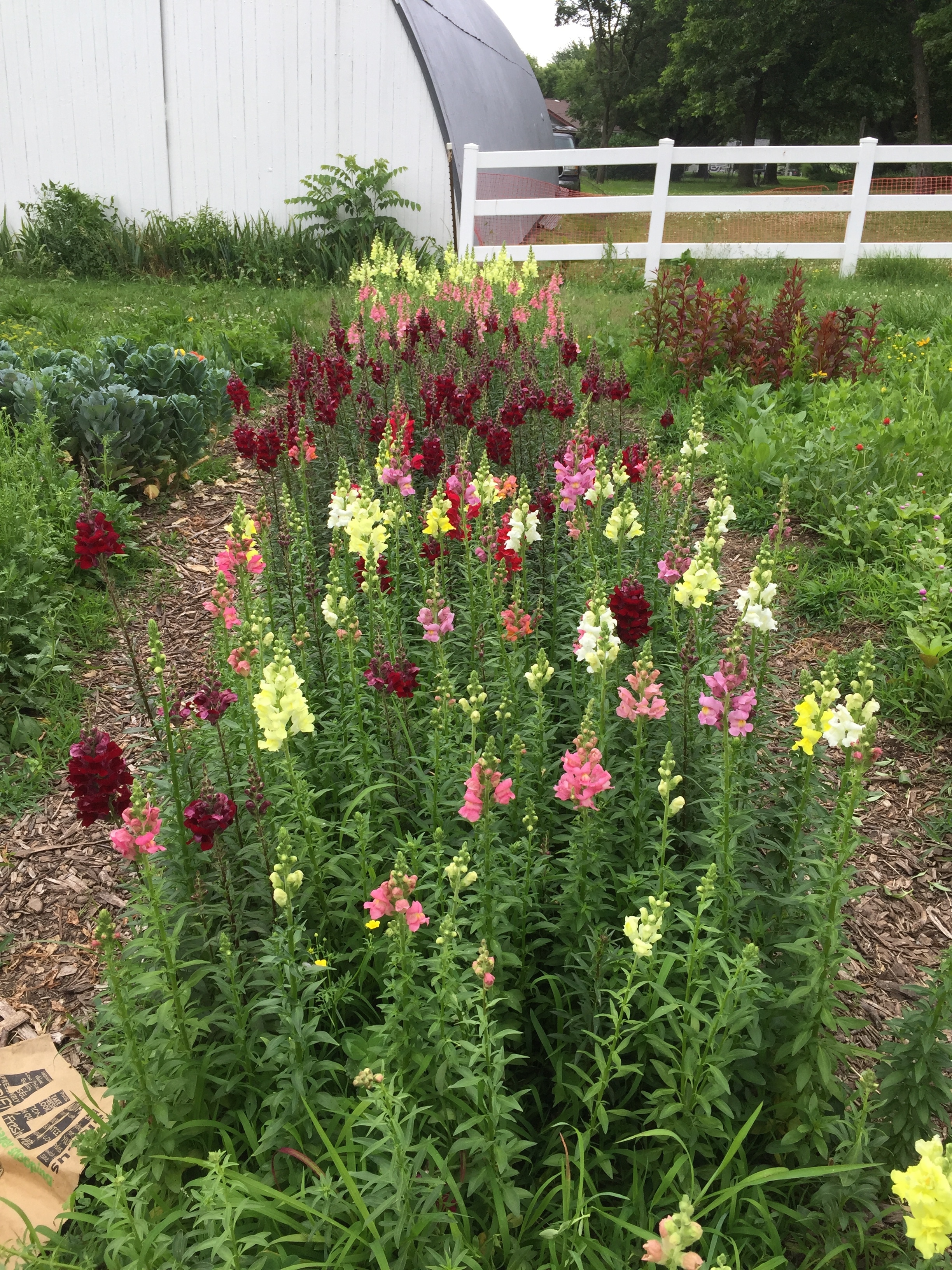Annual Vs. Perennial for New Growers
Armful of Canterbury Bells; Rebecca Shepard Studios
When you are planning a cutting garden and choosing flower varieties, there are several decisions to consider. Perhaps one of the most important is whether to grow annuals, perennials, or a mixture of both.
When I began my business, I did not have a lot of money to invest. Growing annuals from seed is a very inexpensive way to start out. Annuals are often fast growing and produce an abundance of blooms in one season. Zinnias, for example, can be started from seed indoors, planted outdoors three weeks later and be blooming before you know it. Some sunflower varieties begin blooming a short 50-60 days after the seed is sown into the ground! If annuals are so inexpensive and quick to produce why would someone grow perennials? Annuals have their drawbacks as well. They require a lot of upkeep as they must continuously be weeded, and the soil must prepared and amended before each planting (which may be two or more times a year if you are succession planting where older blooms have faded).
All-star annuals in the garden include zinnias, sunflowers, and cosmos. They are summer-long bloomers that can weather heat and drought with ease. Zinnias and cosmos are cut-and-come-again, so the more you cut them, the more flowers they produce! These are flowers that anyone can grow and be easily rewarded. However, they are not among my top favorites. My three favorite annuals to grow are snapdragons, lisianthus and Canterbury bells.
Canterbury Bells (Campanula Champion Series)
Canterbury bells are considered a biennial, meaning they will grow foliage for the first growing season, overwinter, and then flower the following growing season. There are two varieties that can be easily grown as annuals; campanula champion and campanula champion pro. They produce beautiful bell-shaped flowers and have an excellent vase life. Some customers reported that they still looked beautiful two weeks later!
Lisianthus can be a little tricky to grow when they are young because they are so slow-growing and quite needy when it comes to weed control, but man are they worth it! They are extremely heat and drought tolerant, and with a little netting will grow beautiful straight stems full of blooms.
2017 Snapdragon Crop
Snapdragons are a lovely presence in the garden as well as in an arrangement. They, like lisianthus, are slow-growing at first but again are well worth the wait. They come in numerous varieties and colors, making them easy keepers. They are extremely cold tolerant and have stayed green unprotected in my garden all winter long (zone 6b). In previous years, I’ve always bought snapdragons from plugs, but this year I started some from seed and they grew quite well. Canterbury bells, lisianthus, and snapdragon are three must-have annuals in your cutting garden!
Perennials are often more of an investment, are slow to establish, and must be thoughtfully planted. Once they are planted, it is there they will stay. However, many of our most cherished blooms are perennials! Peonies, roses, and hydrangeas are among the most beloved. There are also many plants that can be used as foliage and change in color and interest throughout the season. Although there is a significant cost difference between annuals and perennials up front, investing in a perennial plant is a purchase that only needs to be made one time - not every season. Some perennials may take up to three years to become truly established, but once the plant has weathered a few years, you have an excellent addition to your available cut flowers. I am always so excited when my perennials are blooming because it feels like I haven't earned them! I haven't toiled for months coddling them as seedlings and patiently watering and watching them. They just appear in all their glory for cutting!
Narcissus Daffodil
A few of my favorite perennials include narcissus (daffodil), hydrangeas, and peonies. In my opinion, spring flowers are the best flowers. It’s such a delight to see the little green leaves of the daffodils popping through the soil at the end of winter! They are a true perennial bulb unlike tulips. I plant them once and they appear year after year.
Fluffy hydrangeas can serve a million purposes in floral design. I have only grown the Annabelle variety, but this year I’m going to plant several hydrangea paniculata. Annabelle hydrangea have huge round heads made of smaller balls of white, pink, or green flowers whereas Hydrangea paniculata grow much taller and have a more open conical shaped flower. They range in color from white to green to the lovely antique pink, and they are one of the hardiest hydrangeas (hardy to zone 4).
Peonies with Narcissus, Agrostemma, & foraged greens
Peonies are another lovely spring bloom that are every bride’s dream. They smell like heaven and have a beauty all their own. They are easy-to-grow plants, and there are so many lovely varieties. Peonies are also native to the mountains, so they aren’t incredibly picky about soil type, and they thrive in harsh climates like Alaska. Once they are established they will grow for years and years!
So when it comes to choosing between annuals and perennials, I suggest growing both! If you're starting on a tight budget buy a few perennials and a lot of annuals and use your profits to increase next year. Each year, as your crop increases, your profit will increase, and you'll be able to diversify even more. All you have to do is begin - just one step at a time!












